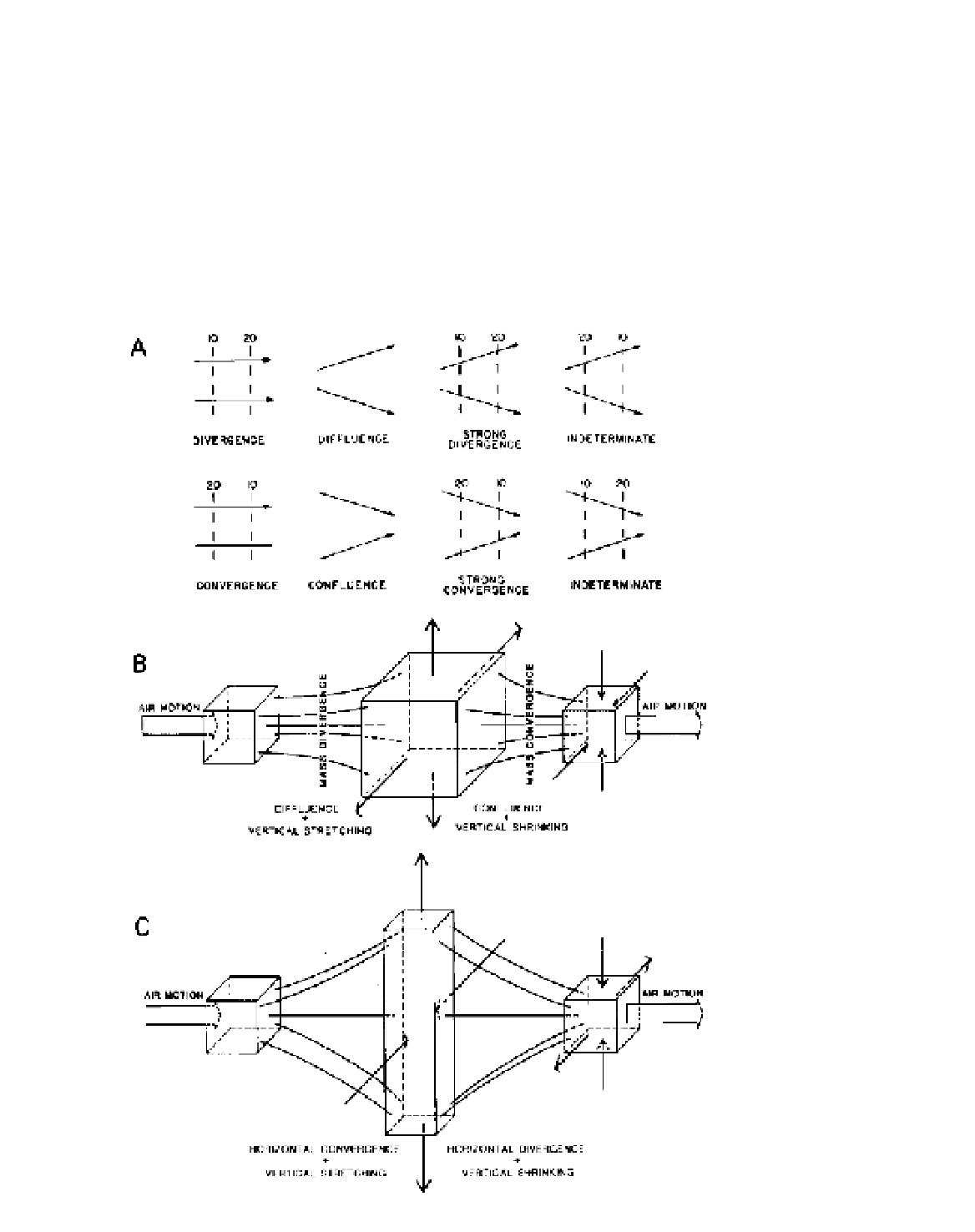Geoscience Reference
In-Depth Information
interface. The mechanism of
form drag
involves the
creation of locally higher pressure on the windward
side of an obstacle and a lateral pressure gradient. Wind
stress arises from, first, the molecular resistance of the
air to the vertical wind shear (i.e. increased wind speed
with height above the surface); such molecular viscosity
operates in a laminar sub-layer only millimetres thick.
Second, turbulent eddies, a few metres to tens of
metres across, brake the air motion on a larger scale
(eddy viscosity). The aerodynamic roughness of terrain
is described by the
roughness length
(z
0
), or height at
which the wind speed falls to zero based on extrapola-
tion of the neutral wind profile. Table 6.1 lists typical
roughness lengths.
Turbulence in the atmosphere is generated by the
vertical change in wind velocity (i.e. a vertical wind
shear), and is suppressed by an absence of buoyancy.
The dimensionless ratio of buoyant suppression of
turbulence to its generation by shear, known as the
Richardson number (
Ri
), provides a measure of dynamic
stability. Above a critical threshold, turbulence is likely
to occur.
Figure 6.6
Convergence and diver-
gence. (A) Plan view of horizontal flow
patterns producing divergence and
convergence - the broken lines are
schematic isopleths of wind speed
(isotachs). (B) Schematic illustration of
local mass divergence and conver-
gence, assuming density changes. (C)
Typical convergence-stretching and
divergence-shrinking relationships in
atmospheric flow.

